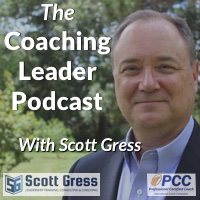
With the spike in Covid cases, it seems that this thing isn’t going away any time soon. Some of the anecdotal reporting of churches “re-opening” are saying that while the online worship attendance was surprisingly high initially, the numbers are starting to drop off. Then as some churches are resuming in person worship, those numbers on site are fairly low. People are concerned for their safety and the safety of others. So it would seem that attendance and participation, one way or another is mixed at best and taking a downturn at worst. I don’t think anyone is particularly surprised by this. Yet it makes us as leaders feel like our brains are "scrambled" to sort it out. Nothing makes sense. So how do we begin to unscramble it?
A church leader can take a few postures in response to this:
- Hang in there and keep at it. This posture will be the majority of people and churches. Just hang in there and keep doing what you have been doing. Hopefully, people will begin to participate again whether it be online or in person. This too will pass. Hopefully, you have enough staying power (and financial offerings) to keep at it.
- Do a “full-court press” on encouraging attendance and participation whether it is online or in person. Flood their inboxes with emails, have a phone calling tree that invites, cajoles and encourages people to come or at least attend online. Remind people of the benefits of worship as well as their responsibility, including how they can give online.
- Initiate a number of “virtual” ministries. Online Bible studies and even online social activities of every sort can be started and shared through various platforms and means. The website can be revamped and the church Facebook page can be more intentionally updated and used.
While other elements can be included, these three seem to capture the postures and options out there. Option one is change-resistant, just keep plugging away. Option two is also change-resistant
but can tend toward infusing a bit of “law” to “encourage” people to stay engaged. Option three is more creative and responsive but it still seems we are missing something. What is that?
Over time, when we least expect it, we as church leaders will run into speed bumps and problems. This seems to be even worse and we can’t seem to catch a break. Moreover, in a month or two many churches will begin their Fall initiatives. In the past, it was when boards and committees would get more serious about gathering and planning their programs. Nominating committees and recruitment may begin. Sunday School would start up again for the students. Stewardship programs would be ramped up. Other Fall programming would find their way on the calendar.
But this year will be different. In fact much different and much harder. Even if people can gather to meet, what do they even discuss!? How do they even plan? How should programs, classes, Sunday school, stewardship drives, Christmas programs etc. even look with this pandemic looming as it is? Every step of the way will be different and challenging. Meeting, debating and deciding will be fraught with frustration with one step forward and two steps back. Tensions may build. Anger may appear and boil over. Some may choose to disengage or not even engage in the first place.
So how do we do Church leadership now?
The first error is to assume we can try to keep to the same things in the same way with the same activities. Each step we may be disappointed. So we need to give ourselves permission to say, “this year will be different and that’s okay.”
But how will it be different?
We need to review the basics.
Ask: What is our purpose? What few things can we focus on doing? How can we do that now? Who can help as allies in this?
What is our purpose? A great question. We assume a lot here. We may have come up with great wordsmithed vision and mission statements. We may even include the kitchen sink into those words and try to say everything. Yet in the end it is so broad and so vague that it isn’t very helpful. Try again. Get really clear. Be concise. Narrowly define your purpose. For example, “We are a Gospel ministry that helps the food challenged in the central west end.” That is your purpose and your rallying cry. If you don’t have one. Prayerfully examine who you are and where you are and define one for such as time as this. Flee from generalities. Embrace specifics. Those can be revisited in the future.
What few things can we focus on doing? What does your purpose say? How is it defined? Stay in that lane. You only have so much time, energy, resources. It is a reach to be the shopping mall of churches offering something for everyone. So look at your purpose and pick just a few that you can pull off well. If the ladies want to try to keep their meetings going on Facebook, God bless them. It just won’t take the church leader’s time and energy. Your focus will be on a few things rather than the twenty that usually happened. Boil it down to the essentials. (See what I just did there?)
Next ask, how can we do that now? It probably won’t be with in-person gatherings and large group activities. So first, grieve that loss. Admit that for a time, the beloved festival, the concert series or other things long held dear by your congregation may be on hold or be very different. The anger of some who don’t want to give up on them may include some hurt from the loss. Grieve with them. Then engage their creativity on just one thing and rally behind it. You are experimenting. Announce it as such. Invite people to have this entrepreneurial, adventuresome attitude. Laugh at yourselves. Announce absolution before you even try! You are explorers in a foreign land. Cut yourselves some slack and know you may go down a dead-end a time or two.
Who can help as allies in this? Your typical players may not want to play. The typical old-guard leadership may grump and grumble or even disengage. Fine. Love them but look around. Who is left that is willing to engage? Talk with them. Dream with them. Experiment with them. What are the social networks and groupings of people in the congregation? Who are the natural connectors for those groups and networks? Typically one or two people are called or regularly talked to by those in the group (whether it is 4, 8, or more people). Look, listen, and tap into those grapevines and clusters of people groups. Engage the people who are more or less the hubs. Meet with them. Talk with them. Begin to ask how they can engage their social network for God’s purposes. This may be new to them. Encourage them to grow in their faith. Ask for prayer requests, discover physical needs, perhaps even audio or video conferencing of their “group” for socializing or even Bible study.
Be intentional. Admit things will be different for a time. Admit you can’t do everything. Pick a few things and do it well. Engage the people who are the network leaders and disciple them. Keep in touch with everyone. Let love cover a multitude of frustrations (a.k.a. sins).
Who knows, when this thing passes, you may have emerged stronger and with many new leaders and even new believers. Our God is in control and He has chosen you to be His person at this time. Wow. What an honor!
Scott specializes in leadership coaching, consulting, coach and leadership training. He is called by Lutheran Counseling Services and partners with the FL-GA District of the Lutheran Church and others as an independent contractor. Listen to The Coaching Leader podcast and contact Scott to continue the conversation or experience a free sample coaching session. scottgress@me.com or scottgress.com. Check out his new online Church Leadership Training at scottgress.teachable.com
[mc4wp_form]"Coaching leaders of leaders"
Check out the: Coaching Leader Podcast!

